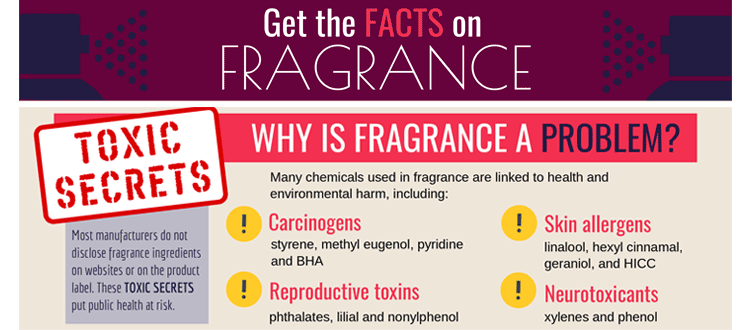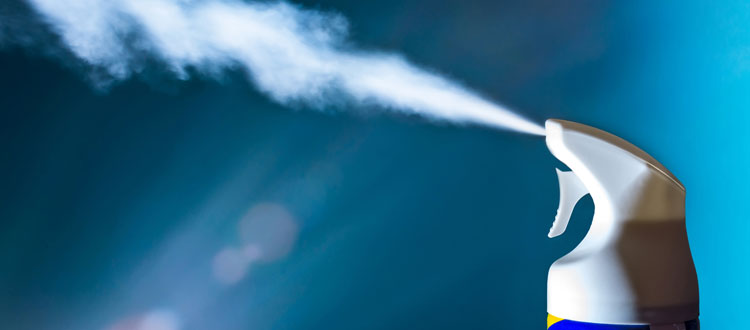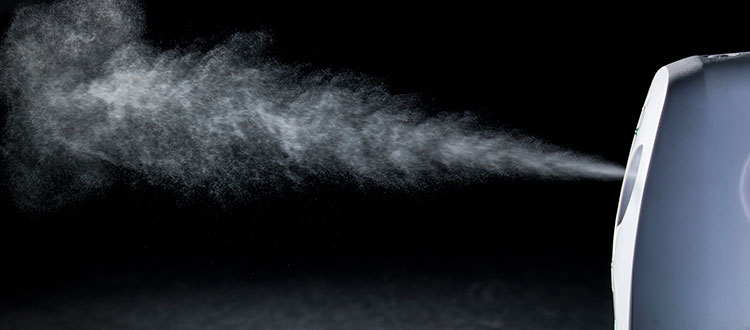Return to Galaxolide main page.
Is Galaxolide pollution only a problem in the Great Lakes?
No.
Unfortunately, Galaxolide is detected in our environment nearly everywhere testing has been conducted. For example, a 2015 study of the sludge of 40 wastewater treatment plants across the United States detected Galaxolide in 100% of samples taken.[1] 100% of drinking water samples from a water treatment plant contained Galaxolide.[2] And in September 2016, a report released in partnership with NRDC, Silent Spring Institute and George Washington University, found Galaxolide in 100% of indoor dust samples tested.
Ok, so it’s in the water and dust. Is it also in humans and wildlife?
Yes.
Not surprisingly given the persistent quality of Galaxolide, the chemical contamination of the environment inevitably leads to contamination of animals and humans.
For example, 96% of fish tissue samples contained Galaxolide in a study of fish living downstream from wastewater treatment plants.[3] Another study detected Galaxolide in 83% of Atlantic salmon sampled.[4] 91% of humans tested in one study had Galaxolide in their blood.(Hutter 2009) 100% of humans tested were found to have Galaxolide in their fat tissue.[5] 97% of breast milk samples tested contained Galaxolide.[6]
Is SC Johnson (SCJ) the only company using Galaxolide?
No.
However, according to the EPA, SC Johnson is one of just six manufacturers reporting the use of Galaxolide in products in the United States in high volume (at a level of over 25,000 lbs per year.)[7] As of April 2016, Galaxolide can be found in over 80 SCJ products.
Many major household product manufacturers, such as RB (makers of Airwick), Clorox, and Johnson & Johnson have eliminated the use of Galaxolide from their products. Which shows us that if other companies can eliminate this fragrance chemical, so can SCJ.
SCJ claims the amount of Galaxolide used in any of their products is well below levels that can cause harm. Can using a product containing Galaxolide harm my health?
There is almost no experimental research that directly examines impacts of Galaxolide exposure on human health, and thus no governing body has ever established a “safe level” allowable in a product. The greatest known concern with Galaxolide, is the cumulative impact of Galaxolide on our environment. Galaxolide does not break down well over time, so the cumulative pollution continues to build in our waterways and soil. As mentioned above, SC Johnson is one of just six companies in the U.S. responsible for the major use of Galaxolide. The amount used in any one product may not be a relevant concern, but the cumulative use in all of their products manufactured year after year is causing a significant pollution problem.
SC Johnson claims their use of Galaxolide represents only 1% of the total use of Galxolide in the U.S. Is this a big deal?
YES. Until just recently the only information available about SC Johnson’s use of Galaxolide came from Chemical Data Reports filed with the EPA, which are required for the six companies that use more than 25,000 pounds of Galaxolide annually in the U.S. SC Johnson was one if just six companies submitted their report, but in contrast to their industry-leading commitment to transparency, chose to designate the actual amount of Galaxolide they use as confidential.
Regardless the claim that they use 1% of the total use of Galaxolide represents approximately 37,000 pounds of the chemical annually, not an inconsequential amount of a persistent, bioaccumulative and toxic (PBT) chemical (see more on PBTs in the questions below). Furthermore, as a sustainability leader in the household products industry, a decision by SC Johnson to eliminate Galaxolide would make a tremendous statement, and would without a doubt impact those other five companies in the industry still using Galaxolide in their products.
What is a PBT?
PBT stands for persistent, bioaccumulative and toxic chemicals. The EPA states:
PBT pollutants pose risks because they are toxic even in small quantities, persist in ecosystems, bioaccumulate in food chains, and can travel great distances (via equipment or products, food, or the environment).
Essentially, PBTs do not break down easily in the environment, build up over time and are highly toxic to the environment. Some widely recognized PBTs include such chemicals as lead, mercury, pesticides, dioxins and PCBs (Polychlorinated biphenyls).
Is Galaxolide a PBT?
YES.
According to the EPA’s PBT Profiler, Galaxolide can be considered a PBT.[8] The PBT Profiler is an online tool which uses computer-based modeling to screen chemicals for toxicity concerns for which there is little or no available experimental data.
The EPA’s 2014 risk assessment of Galaxolide confirmed this PBT finding in stating:
“HHCB is moderately persistent in soil and sediment, has low mobility in soil, suboptimal removal in wastewater treatment plants (WWTP) (with removal primarily through sorption to sludge), and bioconcentration and bioaccumulation into aquatic organisms is low to moderate, depending on the species in which it is measured.”
“HHCB is highly toxic to aquatic organisms under both acute and chronic exposure conditions. Chronic effects of HHCB in aquatic organisms may include effects on adult and embryo survival, behavior, respiration, and larval development.”[9]
These findings were further confirmed by the GreenScreen® for Safer Chemicals Assessment that was commissioned by Women’s Voices for the Earth in 2015 which determined Galaxolide to be a Benchmark 1 chemical (Chemical of Highest Concern) due to its persistent, bioaccumulative and toxic properties.
Does SCJ approve the use of PBTs in their products?
NO.
According to SC Johnson’s 2014 Sustainability Report the company avoids the use of PBTs in their products. Specifically, the report states,
“[l]ike all responsible manufacturers, we avoid PBTs (ingredients or ingredients in concentrations that are known to be Persistent, Bioaccumulative and Toxic), known carcinogens, mutagens or reproductive toxicants…” (p.14)[10]
Why then, does SCJ use Galaxolide, a PBT, in their products?
Apparently, SC Johnson’s safety staff disputes the assertion that Galaxolide is a PBT. An EPA case study from 2002 describes the process that SC Johnson used to assess the PBT status of the chemicals in their products, which began with a PBT Profiler screen of over 1,000 chemicals.[11] The case study highlights the fact that synthetic musks (such as Galaxolide) were flagged as PBTs. In response to this finding, SC Johnson requested further information from Research Institute for Fragrance Materials (RIFM). RIFM is the research arm of the fragrance industry trade association: the International Fragrance Research Association (IFRA). According to the case study,
“RIFM indicated that two classes of musks on the list were expected to biodegrade based on experimental data for members of the class.”
Based on this data SC Johnson determined that synthetic musks like Galaxolide were not persistent, and therefore not classified as PBTs.
What did the experimental data from RIFM claim specifically?
Good question. The experimental data from RIFM has never been made public by SC Johnson.
In our report, Unpacking the Fragrance Industry, Women’s Voices for the Earth raises the alarm on RIFM’s safety standards. We found that the majority of the scientific studies on the safety of fragrance materials are generated by fragrance manufacturers or the fragrance trade association’s own laboratories. Largely, these studies have never been published or peer-reviewed, and are not publicly available.
It is very concerning that SC Johnson relied on unpublished, secret, industry-generated data to make a determination that Galaxolide was not persistent, especially when this determination wholly contradicts both the modeling of EPA and the environmental monitoring research which detects Galaxolide ubiquitously in our environment.
Galaxolide also shows up on the ChemSec SIN List. What does this mean?
The International Chemicals Secretariat (ChemSec) includes Galaxolide on its Substitute it Now (SIN List). The SIN List is a globally used database of chemicals likely to be banned or restricted in a near future based on the chemical’s connection to cancer, its PBT properties or association with hormone disruption.
When buying products, how can I avoid Galaxolide?
SC Johnson identifies the presence of Galaxolide in their products by using the synonym hexamethylindanopyran.
Since fragrance ingredients are not required to be disclosed on a product label or website, consumers will most often have to ask a manufacturer if their products contain Galaxolide in order to avoid the chemical. However, the best way to avoid Galaxolide and other harmful fragrance ingredients is to choose products that are fragrance-free (remember ‘unscented’ does not mean ‘fragrance free’).
Researchers looking into the presence of Galaxolide can look for its CAS # 1222-05-5, or also its other synonym: 1,3,4,7,8-hexahdro-4,6,6,7,8,8,-hexamethylcyclopenta[g[-benzapyran (HHCB).
Return to Galaxolide main page.
—————
[1] Sun P, Casteel K, Dai H, Wehmeyer KR, Kiel B, and Federle T. (2014) Distributions of polycyclic musk fragrance in wastewater treatment plant (WWTP) effluents and sludges in the United States. Science of the Total Environment 493, pp:1073-1078. 2014.
[2] Wombacher WD and Hornbuckle KC. (2009) Synthetic Musk Fragrances in a Conventional Drinking Water Treatment Plant with Lime Softening. J Environ Eng (New York). 2009 November 1; 135(11): 1192
[3] Ramirez AJ, et.al. (2009) Occurrence of Pharmaceuticals and Personal Care Products in Fish: Results of a National Pilot Study in the United States. Environmental Toxicology and Chemistry. Vol. 28, No. 12, pp. 2587-2597. 2009.
[4] Kannan K, Reiner JL, Yun SH, Perotta EE, Tao L, Johnson-Restrepo B and Rodan BD. (2005) Polycyclic musk compounds in higher trophic level aquatic organisms and humans from the United States. Chemosphere 61, pp: 693–700. 2005.
[5] Kannan K, Reiner JL, Yun SH, Perotta EE, Tao L, Johnson-Restrepo B and Rodan BD. (2005) Polycyclic musk compounds in higher trophic level aquatic organisms and humans from the United States. Chemosphere 61, pp: 693–700. 2005.
[6] Reiner JL, Wong CM, Arcaro KF and Kannan K. (2007) Synthetic Musk Fragrances in Human Milk from the United States. Environmental Science and Technology. Vol. 41, No. 11, pp: 3815-3820. 2007
[7] https://www.epa.gov/chemical-data-reporting (Search of EPA’s Chemical Data Access Tool conducted for CAS # 1222-05-5)
[8] http://www.pbtprofiler.net/ (Profile conducted for CAS # 1222-05-5)
[9] US Environmental Protection Agency (2014) TSCA Work Plan Chemical Risk Assessment, HHCB, 1,3,4,6,7,8-Hexahydro-4,6,6,7,8,8-hexamethylcyclopenta-g-2-benzopyran CASRN: 1222-05-5. EPA Document# 746-R1-4001. August 2014.
[10] The Choices We Make: S.C.Johnson 2014 Sustainability Report http://www.scjohnson.com/en/commitment/report.aspx
[11] Weeks JA, Martin FH, Tunkel J (2002) Case Study: SC Johnson’s Use of the EPA PBT Profiler to Screen SC Johnson’s Chemical Inventory, a Joint Study Conducted by SC Johnson and Syracuse Research Corporation. Available: https://www.epa.gov/sites/production/files/2015-05/documents/scjohnson-study-2002.pdf.








